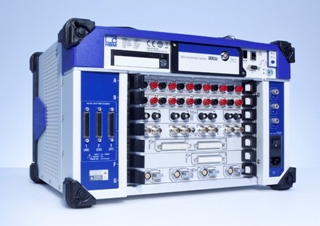May 22 2015
HBM, Inc., a leading manufacturer of data acquisition systems, analysis and calibration software, strain gauges, transducers and sensors, introduces the new HBM GEN7tA transient recorder and data acquisition system.
 GEN7tA
GEN7tA
The system can acquire and stream data up to 400 MB/s, making it one of the fastest systems available today. This makes it a good choice for applications, such as avionics testing that require hundreds of channels and high sample rates.
The standard 1 Gbit Ethernet interface supports streaming recorded data directly to a PC at 100 MB/s. The optional 1 Gbit Optical Ethernet allows isolated control of the mainframe as well as cable lengths up to 10 km (6.2 mi) while maintaining full streaming performance. For higher streaming rates of 400 MB/s, a 10 Gbit electrical or optical Ethernet option is available. When more reliable or distributed storage of recorded data is required, the GEN7tA supports an optional removable Solid State Disk or can directly store recorded data on an external Network Attached Storage (NAS) device.
The GEN7tA has seven slots for HBM Genesis data acquisition cards, allowing users to configure a system with up to 224 channels per unit. Users can configure systems requiring more than 224 channels by synchronizing the GEN7tA with other Genesis HighSpeed data acquisition systems by using the Master-Slave option, or with other data acquisition systems using Precision Time Protocol (PTP). A 19-inch rack-mount option allows it to be easily integrated into test bench applications.
Users can choose from a wide variety of Genesis HighSpeed data acquisition cards that allow them to make measurements with current probes, strain gauges; piezoelectric sensors, such as accelerometers and pressure transducers, and TEDS sensors. Genesis HighSpeed data acquisition cards are also available that let users input digital signals, measure voltage signals up to ±1000 V, or make extremely fast measurements at rates up to 100 million samples per second. The GEN7tA also has three connections for digital inputs, which can be used to connect up to six torque transducers for acquiring torque and rotational speed.